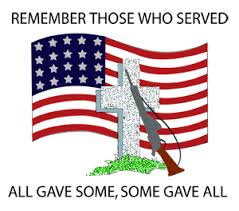 While Memorial Day weekend is considered the unofficial start to summer, it is more importantly a time to remember those soldiers we have lost in service to our country.
While Memorial Day weekend is considered the unofficial start to summer, it is more importantly a time to remember those soldiers we have lost in service to our country.
“The brave men and women in our armed forces sacrifice every day; some make the ultimate sacrifice,” said Cherri Senders, Labor 411 founder. “While we spend time with friends and family this holiday weekend, these heroes must not be far from our thoughts.”
In addition to remembrance, Memorial Day can also be a time to honor those who made it home. This means giving those who have served something to come home to, including a job. The Helmets to Hardhats program was designed by the building and construction trades so that soldiers returning home have an option for a fruitful post-duty career, no experience necessary. It can often be difficult for veterans to make the transition from military life to the civilian workforce, and this program assures they will not be left behind or forgotten by giving them an opportunity to train for a good-paying job in the construction industry. If you are a veteran or know one who is looking for a career, check out their FAQ section to learn more.
Railroads have also committed themselves to hiring veterans whenever possible.
Memorial Day, originally called Decoration Day, is a day of remembrance for those who have died in service of the United States of America. Over two dozen cities and towns claim to be the birthplace of Memorial Day. While Waterloo N.Y. was officially declared the birthplace of Memorial Day by President Lyndon Johnson in May 1966, it’s difficult to prove conclusively the origins of the day.
Regardless of the exact date or location of its origins, one thing is clear – Memorial Day was borne out of the Civil War and a desire to honor our dead. It was officially proclaimed on 5 May 1868 by General John Logan, national commander of the Grand Army of the Republic, in his General Order No. 11. “The 30th of May, 1868, is designated for the purpose of strewing with flowers, or otherwise decorating the graves of comrades who died in defense of their country during the late rebellion, and whose bodies now lie in almost every city, village and hamlet churchyard in the land,” he proclaimed. The date of Decoration Day, as he called it, was chosen because it wasn’t the anniversary of any particular battle.
On the first Decoration Day, General James Garfield made a speech at Arlington National Cemetery, and 5,000 participants decorated the graves of the 20,000 Union and Confederate soldiers buried there.
The first state to officially recognize the holiday was New York in 1873. By 1890 it was recognized by all of the northern states. The South refused to acknowledge the day, honoring their dead on separate days until after World War I (when the holiday changed from honoring just those who died fighting in the Civil War to honoring Americans who died fighting in any war).
It is now observed in almost every state on the last Monday in May with Congressional passage of the National Holiday Act of 1971 (P.L. 90 – 363). This helped ensure a three day weekend for Federal holidays, though several southern states have an additional separate day for honoring the Confederate war dead: January 19 in Texas; April 26 in Alabama, Florida, Georgia, and Mississippi; May 10 in South Carolina; and June 3 (Jefferson Davis’ birthday) in Louisiana and Tennessee.
Visit www.usmemorialday.org to learn more about Memorial Day.